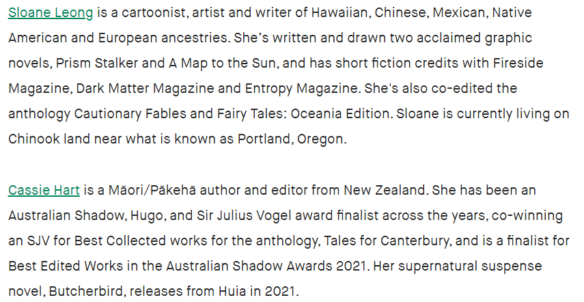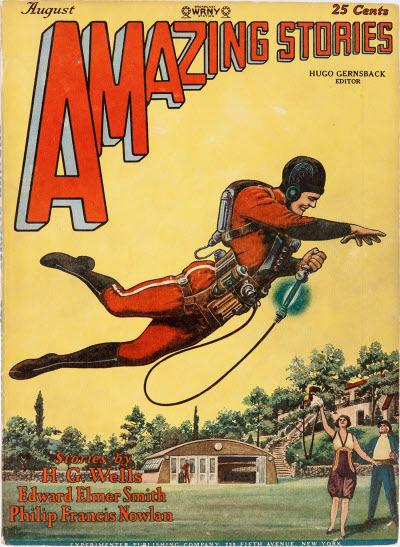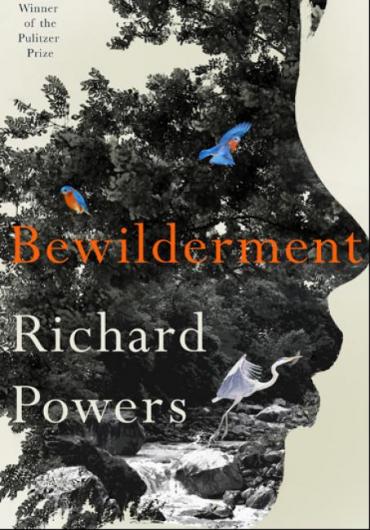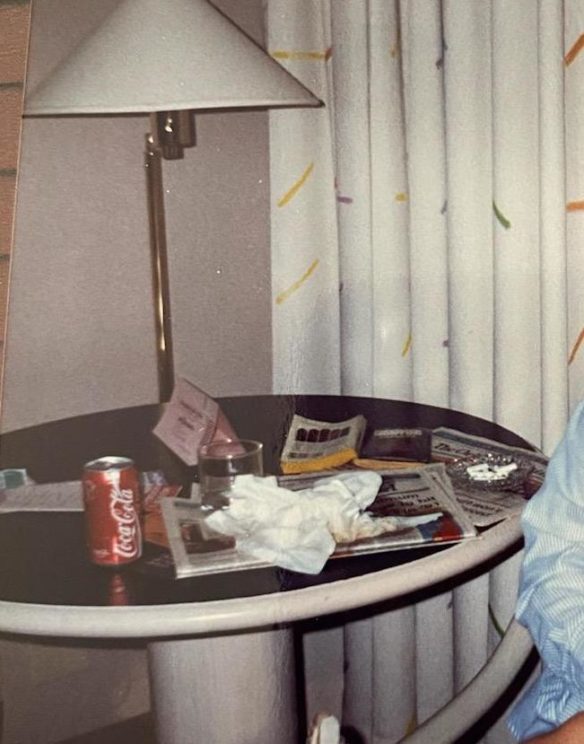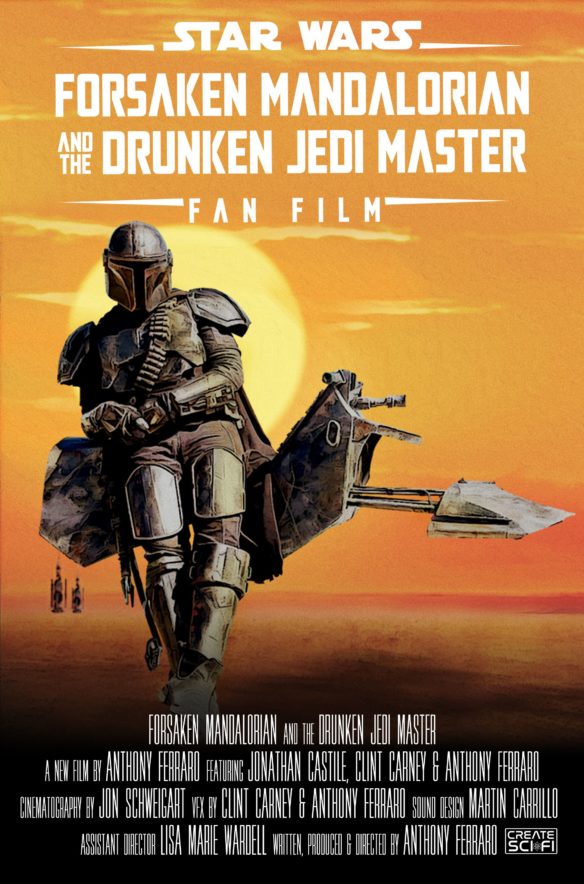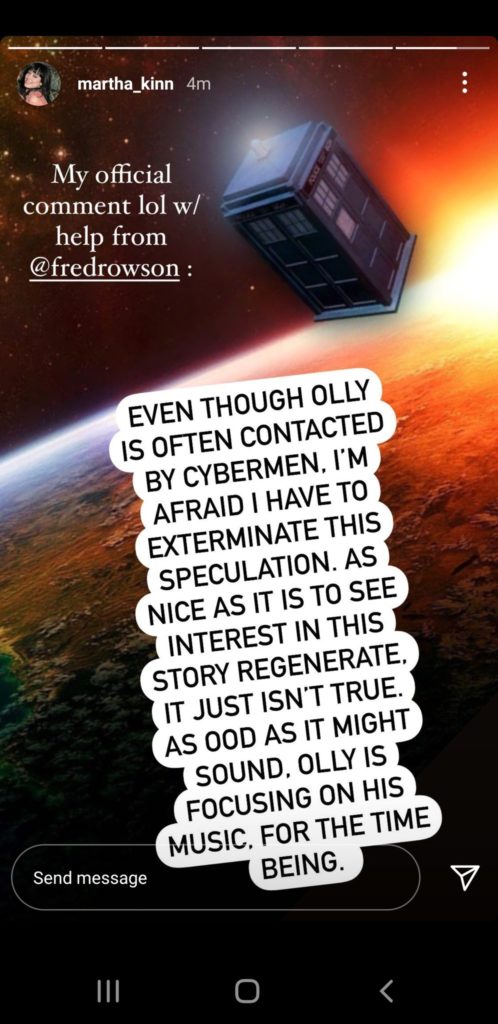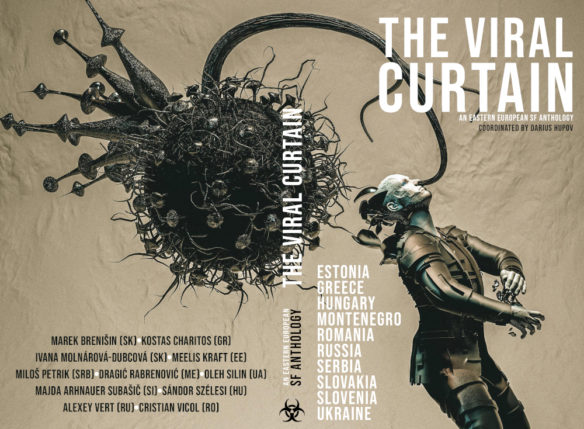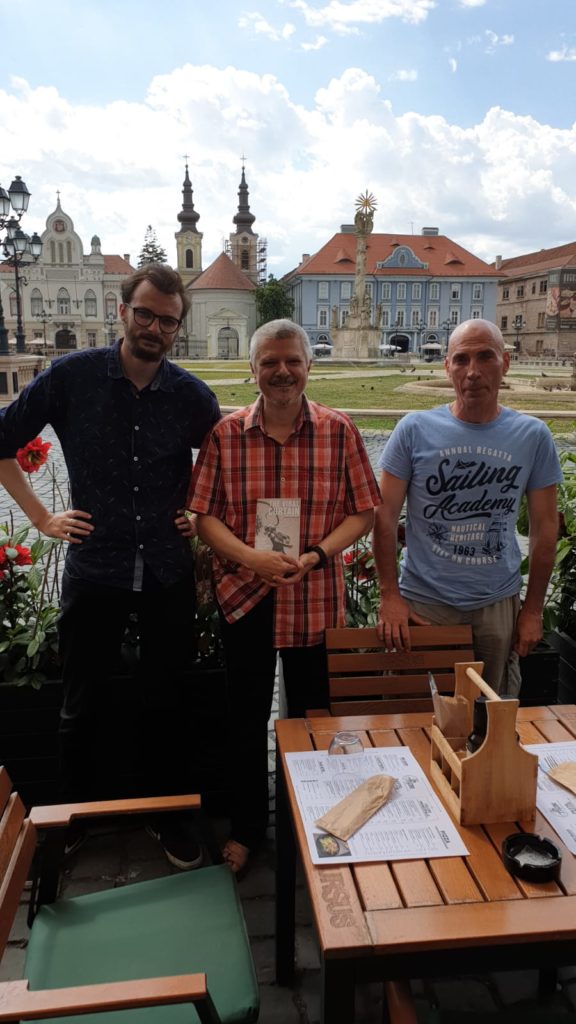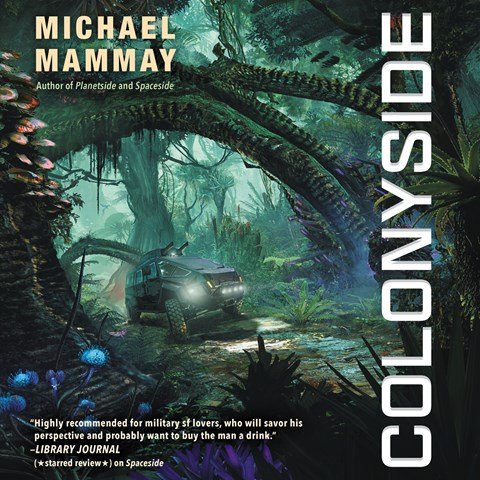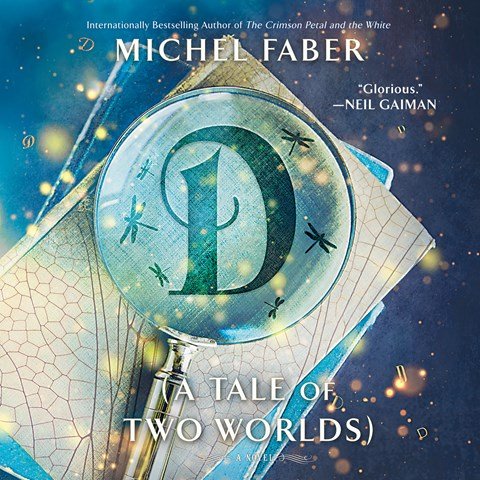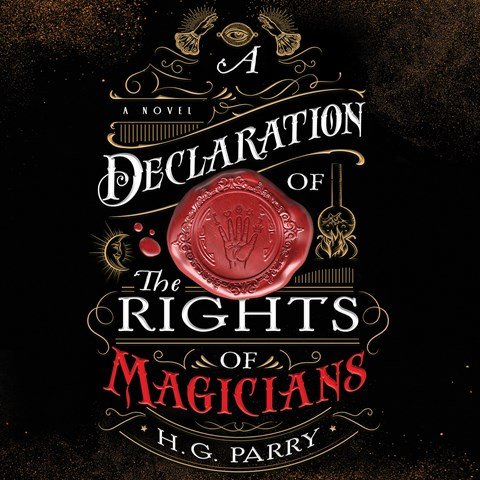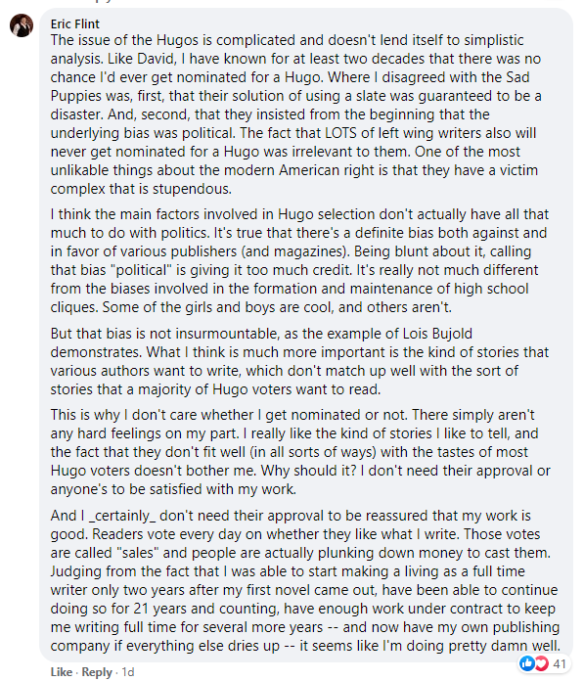(1) HUGO FINALISTS AGED IN THE CASK. At Young People Read Old SFF, James Davis Nicoll gets the panel’s reaction to William F. Wu’s story “Hong’s Bluff”.
This month’s Young People Read Old Hugo Finalists story is William F. Wu’s Hugo and Nebula-nominated “Hong’s Bluff”. Wu has had a long career—the 50th anniversary of his first sale is only three years off — with a respectable collection of nominations and accolades. However, honesty requires me to admit this is the first Wu story I have ever read. It was certainly… energetic. Wu is now on my acquire list….
(2) DOCUMENTING THE IMPACT OF TREK. Nana Visitor is writing a book about the women of Star Trek and their effect on culture, and would like to hear from any women who are in the medical field and were inspired by Star Trek.
(3) BURIED ALIVE IN $$$. Paste Magazine’s Jacob Oller says, “The IP Era’s Venture Capital Philosophy Has Poisoned Movies”.
Among so many heinous problems trickling down on our heads from the top of the film industry is that of intellectual property. It’s not that adaptations are new, but that the ability to make a living by creating anything else has only recently been destroyed. IP obsession has killed the mid-budget movie, it’s killed the movie star, and it’s coming for the rest of the industry. This is as much a problem for audiences as for filmmakers (at any level), and it all comes from the same place: Unchecked greed, and the familiarity with which we accept it.
Tidy, consistent, sustainable profits—the kind of thing generated by movie studios that once offered a diverse slate of reasonably budgeted adult dramas, teen-date rom-coms, family films, and fence-swinging art movies—are a thing of the past for those in charge of the industry. Other forces from the entertainment world are certainly at play, specifically the rise of prestige TV as a destination for what the movies have abandoned. But the pivot to the IP Era feels simple, because it feels familiar. It’s because tidy, consistent, sustainable profits aren’t enough. There must be growth. There must be domination. There must be Shared Universes.
This attitude goes beyond being risk-averse. Risk aversion isn’t new. Single-minded speculation, trying to alchemize IP into gold, is.
The management decisions keeping workers from their fair pay—as described by Writers Guild of America board member John Rogers in a thread about the current strike—are the same ones milking old IP for all it’s worth: “The new robber barons of Hollywood are on a suicide run.” This shift is tech-bro economics, Wall Street-fellating “vulture capitalism” here to feast on the industry, not further it….
(4) ALT-INTELLIGENCE. Chris Panatier tweeted a very funny thread about an AI writing program run amuck. Thread starts here.
Here is another excerpt:
(5) NEBULA WINNERS CONSIDERED. Cora Buhlert offers “Some Thoughts on the 2022 Nebula Award Winners”. For example:
… The winner of the 2022 Nebula Award for Best Novella is Even Though I Knew the End by C.L. Polk. This is one win I’m fully aboard with, because Even Though I Knew the End mixes a lot of elements I like – urban fantasy with a retro noir setting, a hardboiled detective story and a wonderful love story. It’s a great novella and I hope to see it on the Hugo ballot this year….
(6) A TOY STORY. Cora Buhlert also released a new “Masters-of-the-Universe-Piece Theatre: ‘Playing for Dinner’”.
…So enjoy this story of Orko and Man-e-Faces, the two entertainers at the royal palace, teaming up and taking their show on the road.
On the market place of the city of Sarnscepter…
(7) AFROPANTHEOLOGY. The latest If This Goes On (Don’t Panic) podcast features “Publishing in Africa: Afropantheology with Oghenechovwe Donald Ekpeki”.
In this Episode of Publishing in Africa, Oghenechovwe and Alan [Bailey] discuss the meaning behind Afropantheology, Oghenechovwe’s plans for Afropantheology (including a new line of books), and the International Conference for Fantasy in the Arts.
(8) DEJA FU. This seemed like the perfect video to discover on the day I began rereading the Murderbot series. “Tesla Bot Update”.
(9) IT’S TIME. See “The Muppet Show” theater at LEGO Ideas. (And there are a lot more images in the updates.)
…For nearly 70 years, Jim Henson’s creations have captured the hearts of millions of fans around the world in movies, TV shows, Disney attractions, concerts, and more. Now, for the first time ever, join Kermit the Frog, Fozzie Bear, Miss Piggy, and the Great Gonzo in this zany recreation of the Muppet Show in LEGO form!
This miniature playset beautifully houses some of the Muppet’s most hilarious and endearing production numbers through the years. The theater proscenium features an ornate red and gold facade harkening back to the show’s vaudevillian roots. Look closely at some of the art deco decor… you might spot a few easter eggs hiding in the design.
The mainstage includes three mini diorama sets and a detachable balcony. With ‘you’ as the guest star, start off the show beneath the Muppet Show’s iconic opening theme arches. Then, you’ll be able to act out wacky experiments in Muppet Labs, cook up a feast in the Swedish Chef’s Kitchen, rock out with the Electric Mayhem, or explore the final frontier on the set of the USS Swinetrek. If that’s not enough, Statler and Waldorf will throw in a quick heckle or two from their balcony seats….

(10) MEMORY LANE.
2015 – [Compiled by Cat Eldridge.]
Kazuo Ishiguro, a Japanese-born British writer, has written four SF novels including The Buried Giant: A Novel which is where our Beginning is from, the other three being Klara and The Sun, Never Let Me Go and The Unconsoled.
It was published eight years ago by Alford Knopf. It didn’t win any awards but it was nominated for both a Mythopoeic and World Fantasy Award.
The British Council, yes the British Council has a very nice literature section on their website. They, say that “Ishiguro’s novels are preoccupied by memories, their potential to digress and distort, to forget and to silence, and, above all, to haunt.”
February of this year, the Hollywood Reporter said that Netflix planned on adapting the novel into an animated film. It will have Guillermo del Toro as director and Dennis Kelly as writer.
With that, here’s the Beginning…
The Buried Giant: A Novel to The Buried Giant: A Novel
You would have searched a long time for the sort of winding lane or tranquil meadow for which England later became celebrated. There were instead miles of desolate, uncultivated land; here and there rough-hewn paths over craggy hills or bleak moorland. Most of the roads left by the Romans would by then have become broken or overgrown, often fading into wilderness. Icy fogs hung over rivers and marshes, serving all too well the ogres that were then the still native to this land. The people who lived nearby—one wonders what desperation led them to settle in such gloomy spots—might well have feared these creatures, whose panting breaths could be heard long before their deformed figures emerged from the mist. But such monsters were not cause for astonishment. People then would have regarded them as everyday hazards, and in those days there was so much else to worry about. How to get food out of the hard ground; how not to run out of firewood; how to stop the sickness that could kill a dozen pigs in a single day and produce green rashes on the cheeks of children.
In any case, ogres were not so bad provided one did not provoke them. One had to accept that every so often, perhaps following some obscure dispute in their ranks, a creature would come blundering into a village in a terrible rage, and despite shouts and brandishings of weapons, rampage about injuring anyone slow to move out of its path. Or that every so often, an ogre might carry off a child into the mist. The people of the day had to be philosophical about such outrages
In one such area on the edge of a vast bog, in the shadow of some jagged hills, lived an elderly couple, Axl and Beatrice. Perhaps these were not their exact or full names, but for ease, this is how we will refer to them. I would say this couple lived an isolated life, but in those days few were “isolated” in any sense we would understand. For warmth and protection, the villagers lived in shelters, many of them dug deep into the hillside, connecting one to the other by underground passages and covered corridors. Our elderly couple lived within one such sprawling warren—“building” would be too grand a word—with roughly sixty other villagers. If you came out of their warren and walked for twenty minutes around the hill, you would have reached the next settlement, and to your eyes, this one would have seemed identical to the first. But to the inhabitants themselves, there would have been many distinguishing details of which they would have been proud or ashamed.
I have no wish to give the impression that this was all there was to the Britain of those days; that at a time when magnificent civilisations flourished elsewhere in the world, we were here not much beyond the Iron Age. Had you been able to roam the countryside at will, you might well have discovered castles containing music, fine food, athletic excellence; or monasteries with inhabitants steeped in learning. But there is no getting around it. Even on a strong horse, in good weather, you could have ridden for days without spotting any castle or monastery looming out of the greenery. Mostly you would have found communities like the one I have just described, and unless you had with you gifts of food or clothing, or were ferociously armed, you would not have been sure of a welcome. I am sorry to paint such a picture of our country at that time, but there you are.

(11) TODAY’S BIRTHDAYS.
[Compiled by Cat Eldridge.]
- Born May 21, 1903 — Manly Wade Wellman. I remember reading the John the Balladeer collection Karl E. Wagner did and then seeking out the rest of those stories. Amazing stuff! Read the Complete John Thunstone a few years back — strongly recommended. What else by him should I read? And I should note he’s not that well stocked at the usual suspects. (Died 1986.)
- Born May 21, 1917 — Raymond Burr. Speaking of lawyers, we have the Birthday of the man who played Perry Mason. It looks the 1949 film Black Magic with him playing Dumas, Jr. was his first genre performance. Bride of the Gorilla was his next with Lou Chaney Jr. co-starring and Curt Siodmak directing. He goes on to be Grand Vizier Boreg al Buzzar in The Magic Carpet before being Vargo in Tarzan and the She-Devil. And finally he’s in a Godzilla film, Godzilla, King of the Monsters! To be precise, as Steve Martin says. And unfortunately he played the same role in Godzilla 1985 which earned him a Golden Raspberry Award. (Died 1993.)
- Born May 21, 1918 — Jeanne Bates. She’s Diana Palmer in the Forties The Phantom serial, possibly the first one done. Her first genre was as Miss Norcutt in The Return of the Vampire, in a not authorized sequel to Lugosi’s 1931 Universal Studios film Dracula. Most of the films she’s known for are such horror films such as The Soul of a Monster and Back from the Dead. (Died 2007.)
- Born May 21, 1940 — Booker Bradshaw. A record producer, film and TV actor, and Motown executive. He’s here because he’s one of those rare secondary characters that showed up more than once on Trek. He played Dr. M’Benga in “Obsession” and “That Which Survives”. Because his background story was that he served under Captain Christopher Pike, his character has been recast on Strange New Worlds and is played by Babs Olusanmokun. (Died 2003.)
- Born May 21, 1945 — Richard Hatch. He’s best known for his role as Captain Apollo in Battlestar Galactica. He is also widely known for his role as Tom Zarek in the second Battlestar Galactica series. He also wrote a series of tie-in novels co-authored with Christopher Golden, Stan Timmons, Alan Rodgers and Brad Linaweaver. (Died 2017.)
- Born May 21, 1954 — Paul Collins, 69. Australian writer who has been nominated for an astounding twenty Ditmar Awards. In the nineties, he won a William Atheling Jr Award for Criticism or Review for The MUP Encyclopaedia of Australian Science Fiction & Fantasy published by Melbourne University Press which alas was never updated. In his twenties, he began published and edited Void Science Fiction and Fantasy, a semi-prozine.
(12) REASON WHY A FAMOUS COMIC SHUTTERED. “’People Would Be Wishing Me Dead’: Why Calvin & Hobbes’ Creator Ended the Comic Despite Its Popularity” at MSN.com.
Bill Watterson, the creative mind behind Calvin and Hobbes, has no issues with how he left his beloved comic strip. An interview reveals Watterson’s reasoning for ending the cartoon and why he still remains confident in his decision….
…While many fans might have preferred the adventures of the comedic duo to continue, Watterson was quite happy to bring Calvin and Hobbes to its natural conclusion. In an interview with The Cleveland Plain Dealer in 2010, Watterson looks back on his career fifteen years after leaving his strip behind, saying:
“This isn’t as hard to understand as people try to make it. By the end of 10 years, I’d said pretty much everything I had come there to say.
“It’s always better to leave the party early. If I had rolled along with the strip’s popularity and repeated myself for another five, 10 or 20 years, the people now “grieving” for “Calvin and Hobbes” would be wishing me dead and cursing newspapers for running tedious, ancient strips like mine instead of acquiring fresher, livelier talent. And I’d be agreeing with them.”
(13) COLLECTIBLES. [Item by Ben Bird Person.] YouTuber Jules Burt just posted this video of his SF/horror Pan Books paperback collection featuring novels by Arthur C. Clarke, Robert Heinlein, and Frederik Pohl: “INCREDIBLE – Vintage PAN SF & Horror – Paperbacks – 1945 to 1979 – Herbert van Thal – John Burke”.
(14) I’VE HEARD THAT NAME BEFORE. Andrew (not Werdna) caught an interesting reference while watching the most recent episode of The Flash. A startled Chester Runk (from 2049) exclaims “Sweet N. K. Jemisin!”
It’s also mentioned in the Arrowverse Wiki episode recap “A New World, Part Three”.
(15) SHARK WEEK’S 35TH ANNIVERSARY. Entertainment Weekly reports “Aquaman himself Jason Momoa will host Shark Week”.
Aquaman star Jason Momoa has been announced as host for the annual Discovery Channel event, news that came out of the Warner Bros. Discovery upfront presentations in New York on Wednesday.
“As the host of Shark Week, I am beyond excited to take you along on this journey,” Momoa said in a statement. “This project means more to me than a week of talking about sharks. It’s a chance for me to learn and share my connection to these amazing creatures. My love of sharks came long before my time as Aquaman — it began several generations before me.”…
(16) PIPPI IN THE BEGINNING. Witness History – “Pippi Longstocking” at BBC Sounds.

In Stockholm in 1941, Astrid Lindgren made up a story for her seven-year-old daughter, Karin, about a young girl who lived alone and had super-human strength.
Karin named her Pippi Långstrump, or Pippi Longstocking in English.
Four years later, Astrid submitted her story into a competition and it won. Her book, Pippi Långstrump, was published and became an overnight success. It’s now been translated into more than 70 languages, as well as being made into more than 40 TV series and films.
Rachel Naylor speaks to Astrid’s daughter, Karin Nyman.
(17) JWST RESULTS CHALLENGE MODELS. It may be even bigger on the inside than they knew: “Rethinking the Universe: Astronomers Disturbed by the Unexpected Scale of James Webb’s Galaxies”.
… The first results from the James Webb Space Telescope have hinted at galaxies so early and so massive that they are in tension with our understanding of the formation of structure in the Universe. Various explanations have been proposed that may alleviate this tension. But now a new study from the Cosmic Dawn Center suggests an effect that has never before been studied at such early epochs, indicating that the galaxies may be even more massive.
If you have been following the first results from the James Webb Space Telescope, you have probably heard about the paramount issue with the observations of the earliest galaxies:
They are too big.
From a few days after the release of the first images, and repeatedly through the coming months, new reports of ever-more distant galaxies appeared. Disturbingly, several of the galaxies seemed to be “too massive.”
From our currently accepted concordance model of the structure and evolution of the Universe, the so-called ΛCDM model, they simply shouldn’t have had the time to form so many stars.
Although ΛCDM is not a holy indestructible grail, there are many reasons to wait before claiming a paradigm shift: The measured epochs at which we see the galaxies could be underestimated.
(18) VIDEO OF THE DAY. “It’s Quieter In The Twilight” is a documentary about the people who keep the Voyager mission going.
In an unremarkable office space, a select group of aging engineers sacrificed promotion, postponed retirement, and dedicated their lives to stay with the longest running and farthest reaching mission in NASA’s history. Fighting outdated technology and time, Voyager’s flight-team pursues humankind’s greatest exploration.
[Thanks to Michael Toman, Cat Eldridge, Mike Kennedy, Francis Hamit, Danny Sichel, Ben Bird Person, Andrew (not Werdna), Andrew Porter, John King Tarpinian, and Chris Barkley for some of these stories. Title credit belongs to File 770 contributing editor of the day Niall McAuley.]




